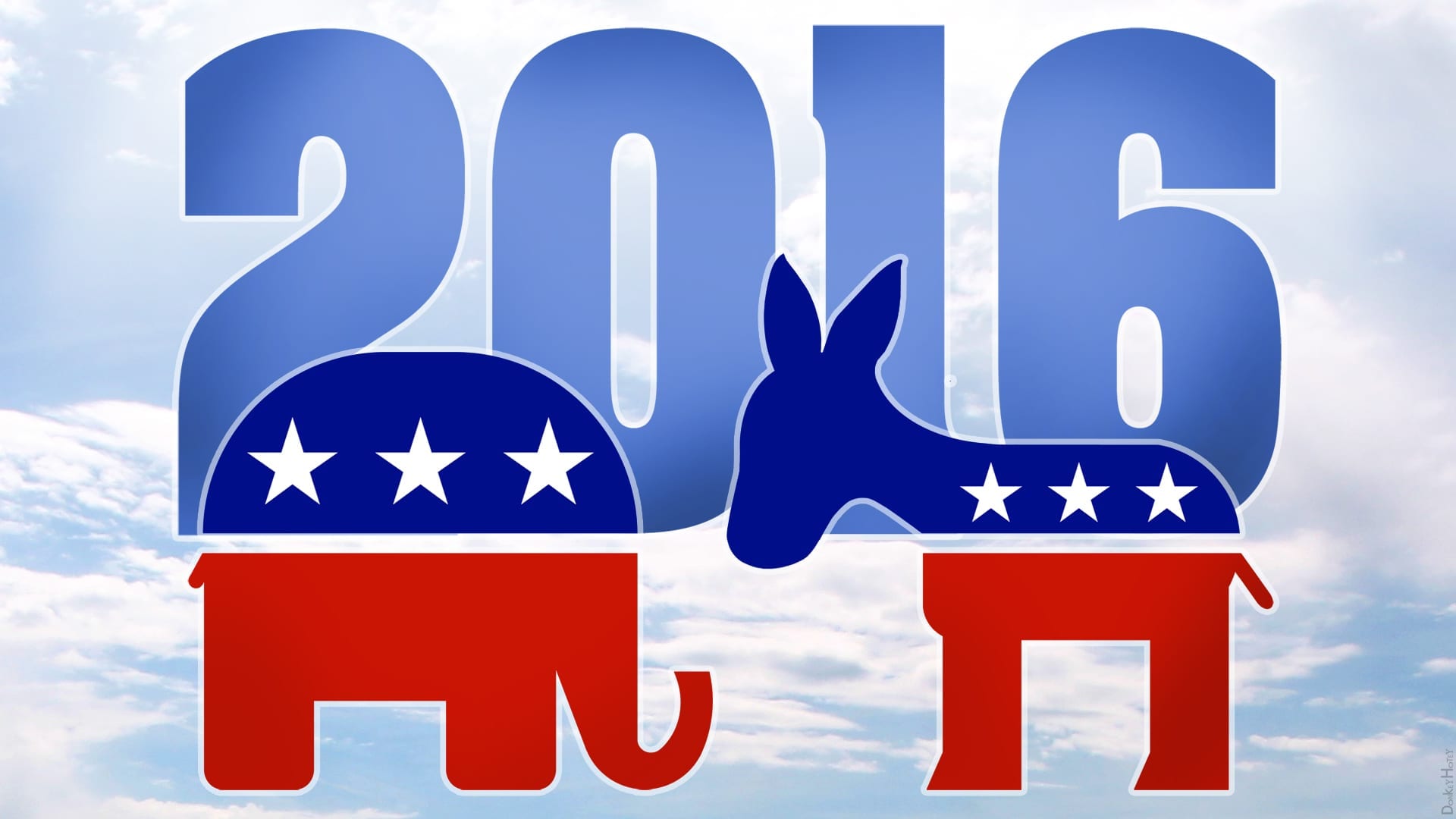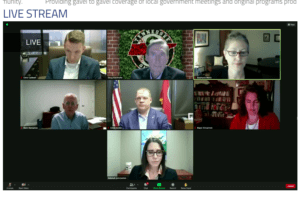President-elect Donald J. Trump: the issues. conclusion
In the final part of the fifth installment of a five-part series analyzing each Presidential candidate’s policies, Samantha Lindsay dissects the issues and the electorate.

https://www.flickr.com/photos/donkeyhotey/24101702220/in/photolist-CHMwo1-JJBqbo-JfqXJj-HtipDo-EmeBfD-q2LvvN-4EjNgb-hmzdu9-pFhzks-q4cpTN-rfqjvv-qb6LLi-q4cTcY-hFgVz7-hFhnAV-HPBQTn-fw4bh2-qXV8Bc-H9ycLj-j4Mzc2-qTskgB-DGFjYr-jc1Ah1-DdGiqr-E7VzQR-qFKZcy-pvL18H-aK7mXD-E7VA8z-CKwfkh-rMrUHE-rBeoWw-dhh6C5-rPZNZd-s7s6xE-dfrMXk-DuGv5d-DajVcb-fw4bfZ-GfbhE9-q3yPGu-oykALh-HV12FW-qb5h4H-CKwgN7-EfaRhe-jP8E6c-nWr2DW-DUbqVj-rQ8WnK
Written by Samantha Lindsay
The following report is the final part of the fifth installment in a series presenting a comparative analysis of select legislative proposals that were a part of the platforms of the two major candidates in the 2016 presidential election; Democrat (D) Hillary Rodham Clinton and Republican (R), Donald J. Trump. In the four previous installments published before the election, I addressed the candidates’ positions on the issues of paid family leave, the economy, gun control, and the Affordable Care Act.
This series is not an endorsement of either candidate.
Trump’s Electorate and the Issues
As pointed out above in the county by county breakdown of the election, Trump won the majority of small cities, towns, suburban and rural communities in the country. Until the past couple of decades, these have been among the primary manufacturing and agricultural centers in the United States, which historically gave rise to the American middle class.
According to exit polls conducted by CNN, Trump won the of majority of the middle-class vote and 40 percent of the working-class vote. While a broad cross-section of voters from all demographics voted for Trump, the CNN exit poll coupled with the county by county analysis indicates that education, profession, annual income, age and geographic location were the primary indicators of the people forming Trump’s electorate.
Middle and working-class voters employed in trade professions were among Trump’s strongest supporters, and their number one issue was the economy. Their positions on almost all other major issues, particularly illegal immigration and international trade agreements are informed directly by the economic experiences of the communities in which they live.
An Oct. 12, Rasmussen survey found that “just 35 percent of likely U.S. voters think the U.S. economy is fair to the middle class,” and with good reason. America has been de-industrializing while our most populous urban centers have been transitioning to a service based economy.
Most high-paying service jobs require higher education and technical training. The majority of manufacturing and agricultural jobs do not require higher education; nevertheless, they have historically been good-paying jobs that provided average middle-class incomes to working families. However, five primary things have happened that have changed the nature of the American economy to the detriment of the middle and working-class, three of which have been the direct result of government policies and international trade agreements.
Monthly calculations from the Bureau of Labor Statistics indicate that a record 95,089,000 Americans are not participating in the American labor force. That’s an increase of approximately 17.8 million from a decade ago. Much of the downturn in labor participation is due to the retirement of the “boomer” generation. However, the retirement of the older generation is far from the only explanation for this decline.
The second development, which has contributed to the decline in manufacturing jobs, is rapid technological innovation. Proponents of economic globalization often claim this is the only reason why manufacturing jobs have declined; however, the evidence does not support the claim. The evidence does suggest that the major causes of America’s de-industrialization and declining native participation in the labor force are due primarily to government policies and foreign trade agreements. These policies include lax enforcement of immigration law leading to a mass migration of illegal immigrants into the United States and “lop-sided” international trade agreements which have contributed to the outsourcing of millions of American jobs.
A June 2014 report by Karen Zeigler and Steven Camarota of the Center for Immigration Studies, indicates that “All employment growth since 2000 went to immigrants.” Their findings showed that “The total number of working-age (16 to 65) immigrants (legal and illegal) holding a job increased 5.7 million from the first quarter of 2000 to the first quarter of 2014, while declining 127,000 for natives.” These findings are consistent with data reported by the Pew Research Center indicating that “There were 8 million unauthorized immigrants in the U.S. working or looking for work in 2014, making up 5 percent of the civilian labor force.”
Jobs that are taken by immigrants fall primarily into three sectors of the economy; low-paying service or agricultural jobs, skilled trade professions and high-paying technology jobs. Employment in the service, trade and agricultural sectors are sought-after by illegal immigrants while high-paying technology jobs are preferred by immigrants who are in the United States on H-1B visas. Both demographics appeal to employers because both are willing to work for lower hourly wages than working and middle-class Americans.
Trump has now become famous (or infamous, depending on one’s perspective) for his campaign promise to build a wall on the Mexican/American border. His pledge and his often stated support for law enforcement earned him the endorsement of the Border Patrol Union; a first in American history. Throughout his campaign, Trump held hundreds of rallies where he attracted tens of thousands of supporters and, at every one of them (as seen in this Fox News report), chants of “Build the wall, build the wall” would break out in his support.
If you ask them, Trump’s supporters will tell you why they want a wall on the southern border. It isn’t because they are racists or xenophobic as many people claim. Indeed, according to this CNN exit poll, Trump won the support of 28 percent of Latino voters. These American voters, including Latino-Americans legally residing in the United States, want a wall built on the southern border to protect American jobs and for reasons of national security. Nevertheless, it is possible that immigration, which is only exacerbating a larger issue, would not be as important as it is to Trump’s voters if not for trade agreements, which have created massive trade deficits leading to the loss of millions of American jobs.
In an article published on Nov. 30, Jeff Faux of the Economic Policy Institute, an independent left-leaning think tank in Washington that is equally critical of both political parties, reported, “When NAFTA was passed, the United States was running a trade surplus with Mexico. President Bill Clinton promised that NAFTA would increase the surplus, creating 200,000 new American jobs in its first two years and a million jobs in five years. By 2010, deficits with Mexico had cost the United States 700,000 jobs.”
Faux goes on to explain that with each new international trade agreement sold to the American public by both Republican and Democratic leaders, the government stacked up higher trade deficits resulting in millions of jobs lost, millions more displaced and decades of wage stagnation. These deficits exist because we are now importing more than we are exporting and consuming more than we are producing. This practice is unsustainable.
As I pointed out in part two of this series, the U.S. Department of the Treasury reports that our national debt is $19.6 trillion, the Federal Reserve reports that our total debt is $46.3 trillion and the U.S. Census Bureau reports that 43.1 million Americans are now living in poverty.
Decades of politicians have promised us that “this trade agreement is different,” even as each new one signed led to the rich getting richer, the middle-class working harder for less and shrinking as a demographic even as the poor are getting poorer. According to this Pew Research analysis, the American middle-class is no longer the majority. Trump’s voters know it and are fully convinced that their government sold them, their children and their country out for the sake of personal gain.
Conclusion
More than anything else, the economy was the single most important issue for Trump’s supporters. According to CNN’s exit polls, Trump won a solid majority of 52 percent of the vote from Americans ages 45 and older.
They didn’t care if they were labeled racists; they were more concerned about being able to pay their mortgage. They didn’t care if they were labeled xenophobes; they were more concerned with paying for their children’s education. They didn’t care if they were labeled sexists and they didn’t care if Trump was crude; they were more concerned about the country they will leave behind for their children.
While the media condemned them and Hillary Clinton branded them with a “basket” of scarlet letters, Trump noticed them. He embraced them, spoke their language and addressed their genuine needs. While it appeared to them that the country hates them and Clinton didn’t care at all about them, Trump gave them hope and promised them a brighter future.
Hatred didn’t drive them to the polls; genuine fear for the future of their country did. Perhaps they misjudged Trump’s opponent. Perhaps Clinton and her supporters misjudged them. The media certainly did. Nevertheless, in the face of overwhelming opposition, the people of 2,627 counties in this country issued a resounding statement in protest of the economic practices of the American government when they delivered President-elect Donald J. Trump a historic county by county, landslide victory.
Edited by Ben Webb
Featured image by DonkeyHotey on Flickr, obtained using creativecommons.org



